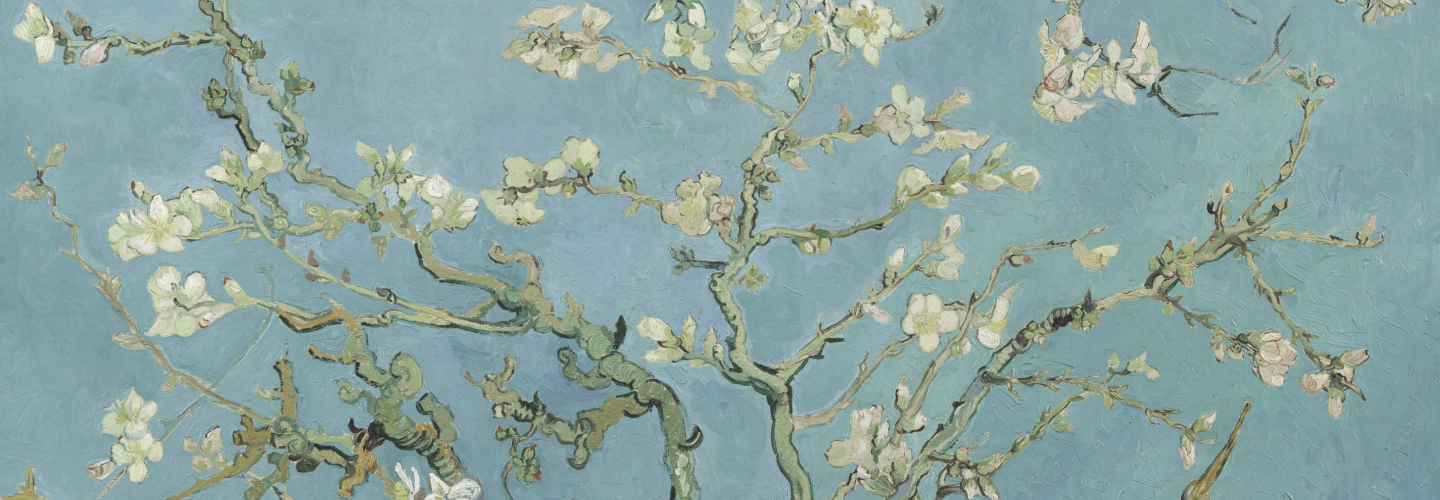in Story & News
The Person Who Made
Vincent van Gogh’s Paintings
the Most Expensive in the World
On November 9, 2022, Vincent van Gogh’s Orchard with Cypresses sold at Christie’s Auction in New York for USD 117.2 million (about KRW 160 billion), setting a new record for the highest price ever for a van Gogh painting. Why is it that the work of an unknown artist, who sold only one painting for a mere 400 francs by the time he died at 37, is now traded for astronomical prices after his death? At the heart of this dramatic turnaround was the marketing strategy of van Gogh’s sister-in-law, Johanna Bonger.
By Savina Lee, Director of the Savina Museum of Contemporary Art
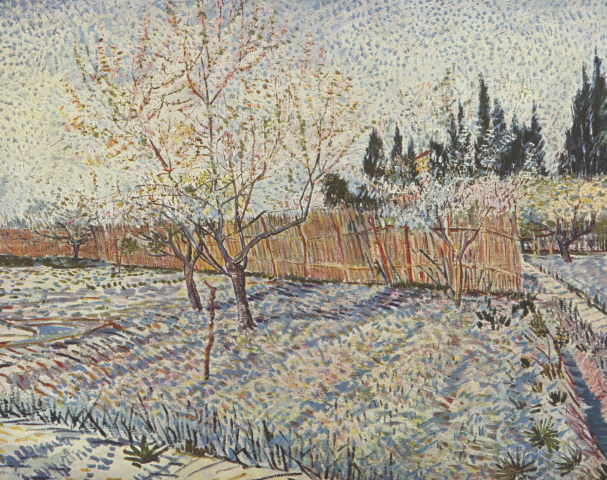
Vincent van Gogh, Orchard with Cypresses, 1888.
One of the 14 paintings in the orchard series that Vincent completed in the spring of 1888 in Arles, France. It expresses the joy and hope of new life beginning in Provence as spring approaches.
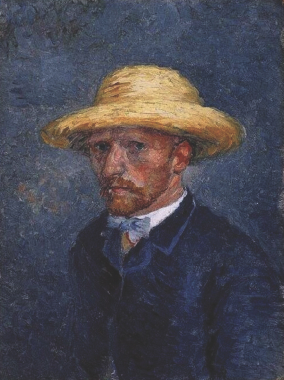
Vincent van Gogh,
Self-Portrait or Portrait of
Theo van Gogh, 1887.
Van Gogh Museum Collection.
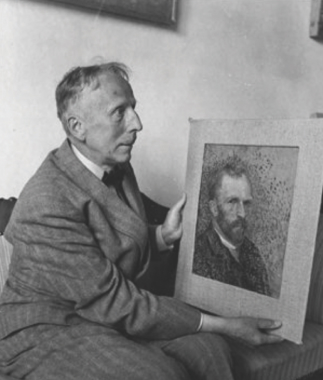
Vincent Willem van Gogh
holding a self-portrait of his uncle.
“I don’t really have any friends except for you,
and when I’m ill, you’re always in my thoughts.”
- From one of the letters of Vincent to his brother Theo.
“I don’t really have any friends
except for you,
and when I’m ill, you’re always
기in my thoughts.”
- From one of the letters of Vincent to his brother Theo.
Theo: Vincent van Gogh’s Only Supporter
Vincent’s younger brother, Theo, was a director at Goupil & Cie, Europe’s most famous art dealership. Using his extensive experience, Theo devoted himself to managing the art career of his brother and promoting his body of work. When Vincent was shaken by anxiety and fear about the future, Theo would encourage him by saying, “I’ve never doubted for a single moment that you will succeed. One day, you will be remembered as a great artist, comparable to Beethoven.” Theo also provided unwavering financial support to ensure that his brother, who was financially incapable, could focus entirely on his creative work. He sent Vincent money for living expenses and art supplies every month. In 1890, Theo’s reported annual salary was 8,247 francs (about KRW 45.5 million), around KRW 18 million of which would be sent to Vincent. Beyond financial support, Theo also provided strong emotional support and sense of connection throughout Vincent’s life. Even when they were far apart, the two brothers regularly exchanged letters—668 letters in all—from 1872 until Vincent’s death in 1890. In a letter Vincent wrote to Theo in 1889, he said, “You must have lived in poverty while feeding me. I will repay you, even if it means giving you my soul.” These letters reveal the deep gratitude Vincent felt toward his brother, his promises to him, and his passion for art. On July 29, 1890, Vincent sustained a self-inflicted gunshot wound near Paris in Auvers-sur-Oise, passing away at the age of 37 two days later. Following Vincent’s death, Theo was consumed with despair and guilt, leading to a complete physical and emotional collapse. He passed away less than six months later, on January 25, 1891.
From an Art Business Novice to Organizing Large-Scale Exhibitions
Vincent van Gogh died without gaining recognition as an artist, and with the death of his only patron, Theo, the chances of his posthumous recognition seemed to have vanished. However, one person played a decisive role in bringing van Gogh’s works and their value to the world—Johanna Bonger, Theo’s wife and Vincent’s sister-in-law. Theo left his young wife, who was only 29, with their infant son Vincent Willem and an inheritance that included around 200 of van Gogh’s paintings, hundreds of sketches, and a Paris apartment filled with the vast correspondence between the two brothers. At that time, van Gogh’s artwork had not been recognized for its artistic value, making Johanna’s inheritance seem more of a burden. Additionally, Johanna had no specialized knowledge or experience in the art business. However, she possessed strong will and keen artistic eye, which she had developed through her husband. Theo had made significant efforts during his lifetime to introduce and sell the works of progressive artists like van Gogh, Gauguin, Pissarro, and Toulouse-Lautrec, using his sharp sense of art and aggressive sales tactics. His influence left a lasting impression on Johanna. Johanna also had a wealth of educational material on modern art. She and Theo had lived in an apartment surrounded by hundreds of van Gogh’s paintings. This environment, filled with Vincent’s innovative works, nourished Johanna’s understanding of modern art.
Despite the difficulty of raising her young son alone, Johanna sought ways to enhance the value of the collection, fulfilling the dream her husband had been unable to realize. She moved back to her hometown of Bussum, Netherlands, where she ran a boarding house that she transformed into a gallery to showcase van Gogh’s works. She also actively invited painters, art dealers, and critics to her boarding house, ensuring that van Gogh’s art received the recognition it deserved. Furthermore, she collaborated with artists, art dealers, and museums to organize about 20 successful exhibitions across the Netherlands. One of Johanna’s most significant achievements was organizing a large-scale exhibition of 484 van Gogh works at the Stedelijk Museum in Amsterdam in 1905. This exhibition became a crucial moment for the reevaluation of van Gogh’s artistic legacy and helped draw public attention to van Gogh’s work.
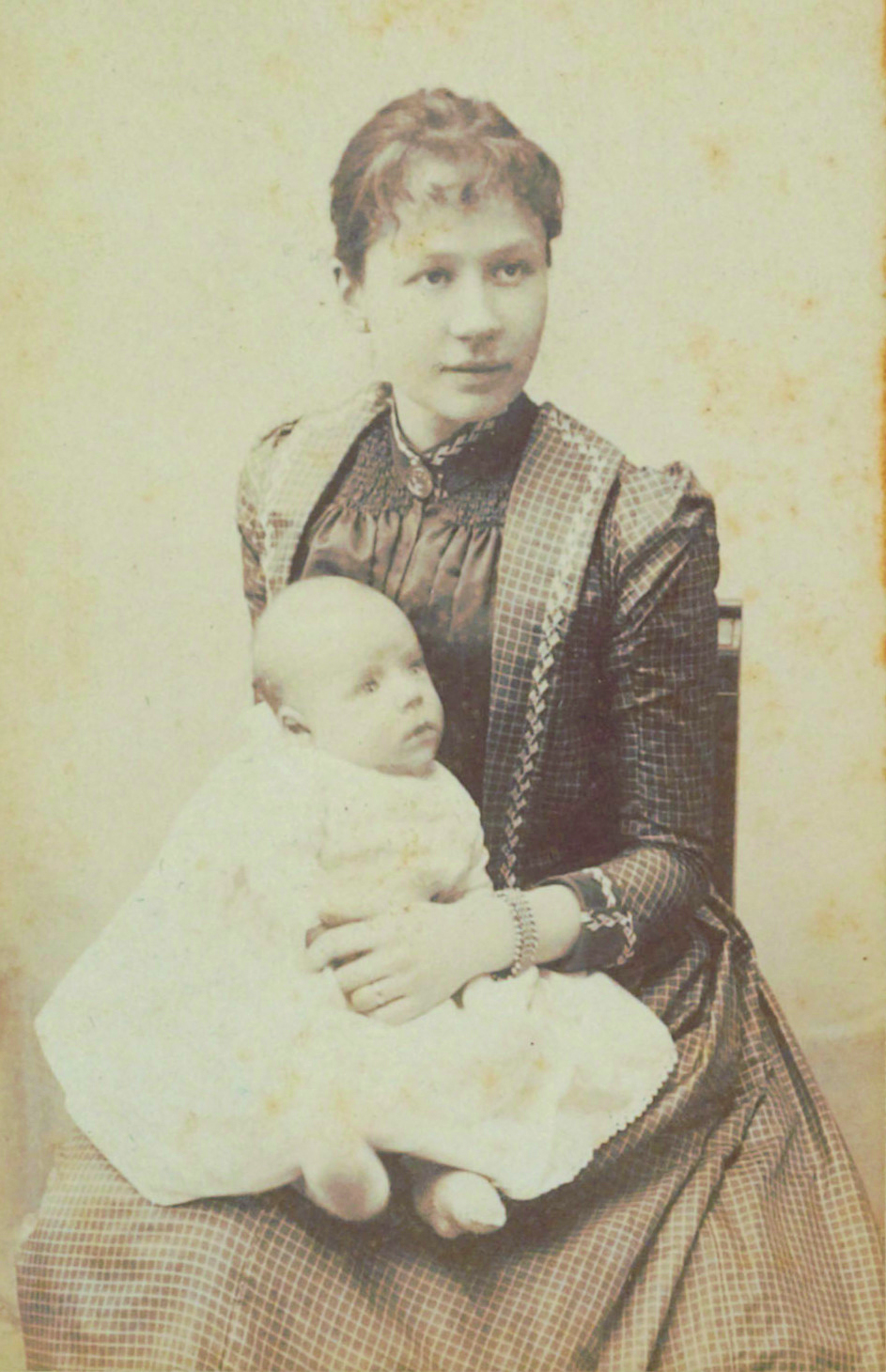
Johanna van Gogh-Bonger and her son, Vincent Willem van Gogh.
Johanna abandoned the prejudice that Van Gogh was a failed, mad artist in both life and art and came to understand her brother-in-law. She realized that her responsibility was to present van Gogh’s true self to the public.
Breathing Life into the Souls of the Van Gogh Brothers
The hidden motivation that allowed Johanna to devote herself to enhancing the value of the collection, despite the difficult circumstances, was the hundreds of letters left behind by Vincent van Gogh. These letters contained not only his emotions, thoughts, and artistic philosophy but also his suffering from mental illness and personal anguish. As Johanna read these letters, she abandoned the prejudice that Van Gogh was a failed, mad artist in both life and art and came to understand her brother-in-law. She realized that her responsibility was to present van Gogh’s true self to the public. This realization is reflected in her diary, where she wrote, “I am lonely and lost, but my life has a mission. After reading and re-reading Vincent’s letters, Vincent’s image finally became clear to me.” In 1914, Johanna edited and published the correspondence between Vincent and Theo in Dutch. This collection of letters vividly portrayed Vincent’s passion and dedication to art as well as the human side, significantly contributing to the perception of the artist as a tortured genius among the public and the art world. Thanks to her dedicated efforts and strategic marketing, Vincent’s works became widely known beyond the Netherlands, gaining recognition across Europe and the United States and increasing in value in the art market.
After Johanna passed away in 1925 at the age of 63, her collection was inherited by her son, Vincent Willem van Gogh. He was deeply aware that his name was given in honor of his uncle, and that the inherited artworks represented a great legacy of the Van Gogh brothers’ spirits and philosophies. To promote Vincent’s artistic world to a broader audience further, he donated the collection to the state. Finally, on June 3, 1973, the Van Gogh Museum was established in Amsterdam, where Vincent’s works could be permanently preserved and exhibited.
Johanna was the true heroine who revealed to the world that the Van Gogh brothers were not only great artists and exceptional art dealers but also left behind a profound legacy. By publishing the letters between the brothers, organizing exhibitions, and networking with key figures in the art world, she played a decisive role in ensuring that Vincent’s life and works were globally recognized. As Van Gogh and the Artists He Loved author Steven Naifeh stated, Johanna overcame societal prejudices and economic hardships in a male-dominated world, using creative management strategies to elevate Vincent to artistic icon status.
“Without Johanna Bonger, there would be no Vincent van Gogh.”
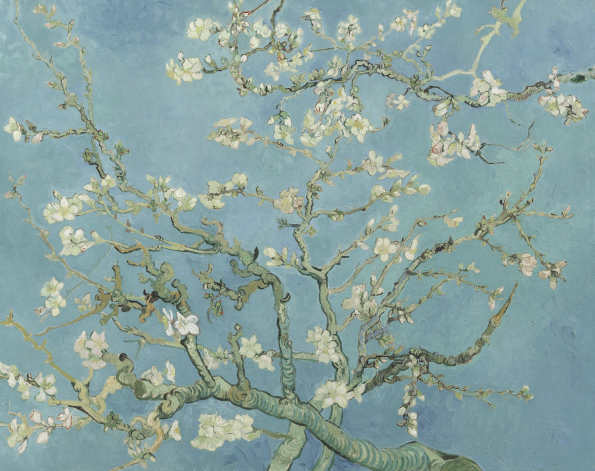
Vincent van Gogh, Almond Blossoms, 1890.
This painting was a gift to celebrate the birth of his nephew, Vincent Willem, who was named after him. It was the last painting of flowers completed by Van Gogh before his death in spring.
